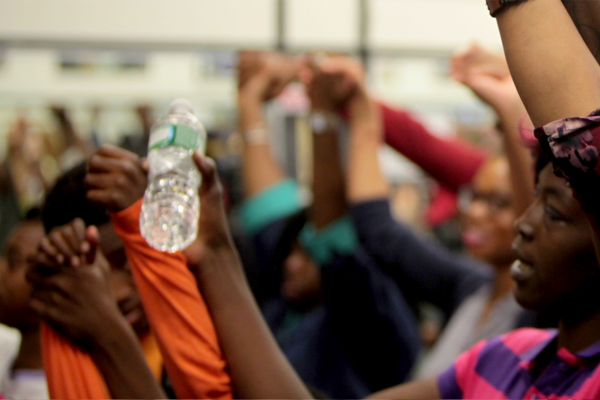IN DECEMBER 2014, the United Nations approved a resolution put forth by Bangladesh and more than 100 other countries that included a reference to “unarmed civilian protection.” This was the first time the phrase had been referenced in an official U.N. General Assembly document.
The following year, a U.N. report noted that “unarmed civilian protection is a method for direct protection of civilians and violence reduction that has grown in practice and recognition. In the last few years, it has especially proven its effectiveness to protect women and girls.”
Last fall, Tiffany Easthom, executive director of Nonviolent Peaceforce, addressed a special U.N. session on unarmed civilian protection with a bold proposal: “The [U.N.] Security Council could ensure the centrality of unarmed strategies in protection of civilian mandates.”
Unarmed civilian protection, or UCP, is just what it sounds like: nonviolent action by civilians to protect other civilians from political violence. The peacekeeping practice is rooted in the call for a “peace army”—a Shanti Sena—by Mohandas Gandhi and Khan Abdul Ghaffar Khan, whom the pope referenced in his 2017 World Day of Peace message.
Peace Brigades International is generally credited with initiating the current practice in the 1980s in Guatemala. Peace Brigades International focused on specific strategies based on the principles and practices of nonviolence, the primacy of local actors, independence, and for many but not all organizations, nonpartisanship, in an organized, disciplined way.
Many organizations around the world are currently practicing this method of intervention, including Peace Brigades International, Nonviolent Peaceforce, Christian Peacemaker Teams, SweFOR, Meta Peace Team, Operation Dove, Ecumenical Accompaniment Programme in Palestine and Israel, the Presbyterian Peace Fellowship, and others.
Read the Full Article

